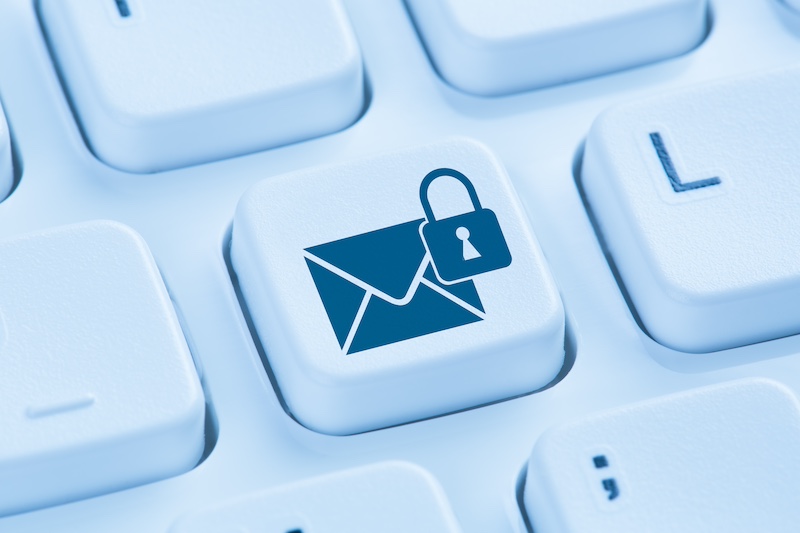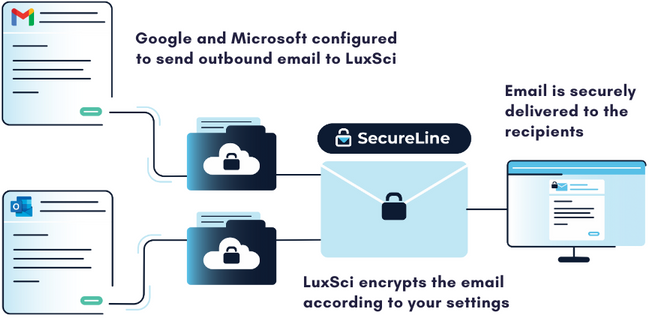Today’s digital-first consumers expect the same convenience and personalization from their healthcare providers that they get from their favorite retailers and service providers. However, unlike companies in other sectors, there’s far less room for error for healthcare organizations, especially when it comes to privacy and data security.
Whether a local pharmacy, online provider of glasses, a wellness store, or a nationwide retail health clinic, the key to building long-term loyalty and ensuring trust with your customers lies in trusted, meaningful communication that’s timely, relevant – and, above all, secure.
As a result, HIPAA compliant email is a strategic component for reliable and effective communication with your customers.
But, what about HIPAA?
Far from being a roadblock, HIPAA compliance is actually an enabler for retail healthcare brands that want to deliver more personalized, more targeted messaging without putting customer trust, or their sensitive personal data, at risk.
In this post, we dive into the most impactful email use cases for retail healthcare providers, as well as how deploying a secure email delivery platform like LuxSci can unlock more meaningful engagement, greater loyalty, and accelerated growth for your company.
Why Email Remains a Top Channel for Retail Healthcare
Email Is Everywhere – Because It Works
Email isn’t just for work or spam folders. It’s the preferred communication channel for tens of millions of health-conscious consumers across all demographics. People are accustomed to receiving alerts from their pharmacies, reminders from clinics, and promotions from their preferred wellness brands – all in one convenient place – and email is an important part of the mix.
When deployed securely, email becomes a powerful, personal, and persistent touchpoint for healthcare engagement.
HIPAA Compliance Enables Trust and Transparency
While your customers crave convenience, they also demand privacy – especially when it comes to their health. HIPAA compliant email ensures that personal health data and protected health information (PHI) stays precisely that – protected – while enabling retail healthcare brands to deliver personalized communications that build trust and loyalty.
HIPAA Compliance Helps Ensure Secure Healthcare Marketing
HIPAA doesn’t restrict your ability to communicate; conversely, it defines how you can do it securely and best perform, while protecting the sensitive data under your care. When emails contain PHI, you need to ensure:
- Email content encryption
- Access controls
- Secure storage and transmission
- A signed Business Associate Agreement (BAA) with your email provider
With the key HIPAA requirements in place, retail healthcare organizations can send high-impact, personalized, and, with some platforms, such as LuxSci, automated emails to engage and educate their customers – all while adhering to HIPAA compliance regulations.
How HIPAA Compliant Email Improves Retail Results
HIPAA compliant email doesn’t just check a box – it opens the door for personalized, proactive, and performance-driven customer and patient engagement. With the right strategy and the right HIPAA compliant email services provider, healthcare retailers can:
- Deliver marketing messages that include PHI with confidence
- Develop trust and customer loyalty through secure, reliable, and frequent communication
- Increase new and repeat purchases and average order value (AOV)
- Lower operational costs in comparison to phone and physical mail-based engagement campaigns
HIPAA Compliant Email Use Cases for Healthcare Retailers
Now, let’s look at six essential use cases that healthcare retailers can employ for more effective customer and patient engagement.
Use Case #1: New Product Announcements
Why It Matters: Drive sales and keep customers informed
Whether it’s a new allergy medication, wellness supplements, or a wearable device, product launch email campaigns allow customers and targets to stay in the loop regarding new offerings that could benefit their health. This empowers individuals to take a more active role in their healthcare journey, while helping you meet your organization’s growth objectives.
HIPAA Compliant Email Advantage
- Announce product launches tailored to individual customer needs, such as health conditions or specific health needs
- Use PHI-related content deliver highly targeted, highly segmented campaigns – while staying compliant
- Build trust by ensuring messages are private and secure
Use Case #2: Promotional Offers and Discounts
Why It Matters: Boost loyalty and repeat business
Both retail healthcare providers and customers benefit from promotions, such as 2-4-1 supplement deals, seasonal flu shot discounts, or loyalty reward bonuses. HIPAA compliant email allows you to securely execute promotional campaigns even when they’re linked to health data or prior purchasing behavior.
HIPAA Compliant Email Advantage
- Target based on previous purchases, prescriptions, or any other PHI data points
- Comply with privacy laws while increasing engagement
- Deliver offers directly to inboxes – no portals or logins
Use Case #3: Reminders for Refills, Appointments, and Screenings
Why It Matters: drive adherence to health plans and improve outcomes
Forgetful customers don’t refill prescriptions, miss wellness exams, and ignore follow-up visits. HIPAA-compliant email reminders help tactfully nudge them towards taking favorable action.
HIPAA Compliant Email Advantage
- Automate refill and screening reminders based on PHI
- Avoid manual call-outs or printed letters
- Boost adherence and improve overall satisfaction
Use Case #4: Order Confirmations and Delivery Notifications
Why It Matters: Create a seamless shopping experience
Consumers want to know that their orders are being processed, shipped, or ready for pickup; in other words, that they’re being taken care of and not taken for granted. For prescriptions, OTC medication, or wellness products, email is the perfect way to keep them updated.
HIPAA Compliant Email Advantage
- Include product names, refill details, and other customer data securely in emails
- Track opens and clicks to ensure delivery – re-target as needed
- Reduce support call volumes with proactive, regular email updates
Use Case #5: Educational Health Content & Resources
Why It Matters: Position your brand as a trusted health partner
From seasonal wellness tips to chronic condition education, sending valuable health education and awareness content helps position your brand as a go-to source for relevant, credible advice – and a contributor to keep people healthier.
HIPAA Compliant Email Advantage
- Personalize content based on past purchases or health concerns
- Build deeper engagement and trust with relevant, timely topics
- Share sensitive health content without privacy risk
Use Case #6: Customer Satisfaction and Loyalty Surveys
Why It Matters: Collect feedback to improve products and services
Post-purchase or post-visit surveys enable retail healthcare providers to measure customer satisfaction, while identifying key areas for improvement. This not only gives you an edge over competitors who are less diligent in collecting feedback, but you also make your customer feel heard, further strengthening their brand loyalty.
HIPAA Compliant Email Advantage
- Send personalized surveys securely
- Include PHI-related context without fear of violation
- Collect better data to inform future campaigns and services
LuxSci Helps Healthcare Marketers Send Secure Email at Scale
Retail healthcare is evolving rapidly – and your customers expect communication that’s personal, secure, and immediate. With HIPAA-compliant email, you can deliver all of that, and more.
From promotions and product launches to order updates and educational content, secure email helps you build stronger relationships, improve customer outcomes, and grow your business, all while maintaining the privacy and trust that healthcare demands.
With retail healthcare leaders like 1-800 Contacts as customers, LuxSci specializes in secure, HIPAA compliant communication solutions for healthcare organizations, including retail health brands, consumer wellness providers, and medical equipment providers.
Whether you’re a national pharmacy chain, a growing telehealth brand, or a local wellness shop, LuxSci provides you with the secure infrastructure and capabilities to scale personalized email engagement with confidence. This includes:
- Automated email encryption (TLS, PGP, S/MIME)
- Email marketing tools specifically designed to align with HIPAA compliance requirements
- 98%+ deliverability and high performance throughput
- APIs and SMTP options for seamless data integration and automation
- Support for marketing, transactional, and operational messages
- A signed Business Associate Agreement (BAA) – with no loopholes or “out-of-scope” services that compromise your compliance posture
Is it time to make us switch from your current provider?
Contact us today to find out more.
Retail Healthcare Secure Email Use Cases FAQs
Can retail Healthcare brands send promotional emails under HIPAA?
Yes, with proper consent and a fully HIPAA-compliant platform like LuxSci, you can send targeted promotional emails that include PHI.
What kind of PHI can I include in a secure email?
You can include health conditions, medication details, order info, service history, and a large array of other PHI data points in your messaging – provided the email is encrypted and sent through a compliant platform.
Are delivery and refill reminders considered PHI?
Yes, if the email content relates to a specific patient and their health, then it contains PHI. That’s precisely why it’s so vital that secure email is used to send out such reminders, or any communication containing sensitive customer or paitent data.
How do I ensure HIPAA compliance with my marketing emails?
Deploying a platform like LuxSci that signs a BAA, provides email encryption, including its content, and all the required PHI safeguards is the best way to ensure HIPAA compliance when executing your marketing campaigns. Better yet, LuxSci also features automation and hypersegmentation to enhance the efficacy of your customer engagement campaigns, as well as ensuring they align with HIPAA requirements.
Can I send secure email campaigns in bulk or high volumes?
Most definitely! In fact, LuxSci’s high-volume secure email solution is ideal for large-scale outreach, whether it’s marketing, educational, or transactional emails. We have designed our infrastructure to facilitate the consistent delivery of hundreds of thousands, if not millions, of emails in accordance with your company’s engagement needs and HIPAA compliance.












